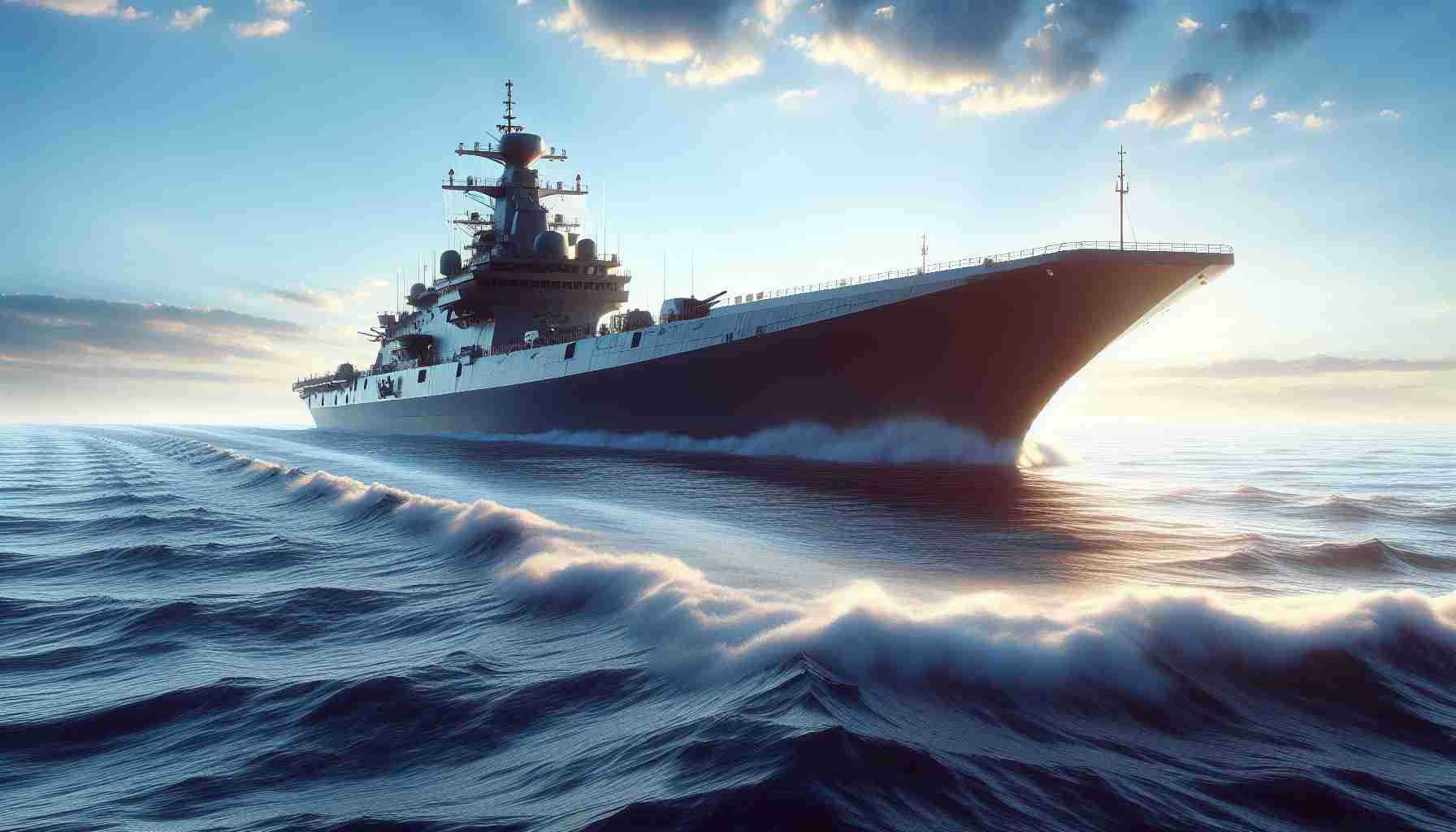- Iran has launched the IRGC Shahid Bagheri, an aircraft carrier adapted from a container ship, extending its naval capabilities.
- The vessel features the ability to launch drone swarms and missile attacks, raising concerns among neighboring nations.
- Despite being less robust than traditional carriers, it can carry drones, helicopters, and various missile systems.
- Experts are divided on its combat effectiveness; some view it more as a symbolic move than a genuine asset in conflicts.
- Stretching 780 feet and weighing 41,000 tons, its adapted design indicates Iran’s strategic shift in naval warfare.
- The Shahid Bagheri symbolizes a potential turning point in modern naval tactics, especially regarding the use of unmanned vehicles.
- It reflects Iran’s ambition to enhance its maritime influence and assert its position in regional and global security.
In an unexpected naval maneuver, Iran has unveiled the IRGC Shahid Bagheri, an unconventional aircraft carrier adapted from a container ship. This impressive vessel, though lacking the robustness of traditional carriers, heralds a new era for Iran’s navy, empowering it to extend its reach well beyond the Persian Gulf.
The Shahid Bagheri’s true prowess lies in its capacity to launch drone swarms and missile attacks, a capability that has neighboring powers on alert. Its design, reminiscent of early naval innovation, enables it to carry drones, helicopters, and a variety of missile systems, thus amplifying Iran’s maritime strength. Yet, despite its intimidating appearance, experts are split on its combat potential. Some view it as a symbolic gesture more than a genuine asset in high-stakes conflicts.
Converted from a South Korean container ship, the vessel stretches an impressive 780 feet and weighs 41,000 tons. While Iranian claims of its range and speed might be optimistic, its mixed armament and ability to deploy unmanned surface vehicles signal a strategic shift. The real question remains: is this bold new addition a game-changer or merely a display of Iran’s ambitions?
As more powers explore the integration of unmanned aerial vehicles into naval strategies, the Shahid Bagheri could mark a pivotal point in modern warfare. While its effectiveness against larger, traditional navies is debatable, it introduces a fresh dynamic to Iran’s naval options, offering a long-range presence that could influence regional security calculations. This new entrant into naval theater demonstrates Iran’s determination to enhance its maritime footprint and secure its interests on the global stage.
Is Iran’s Unconventional Aircraft Carrier a Naval Game-Changer?
Introduction
In a surprising and innovative move, Iran has transformed a South Korean container ship into the IRGC Shahid Bagheri, an unconventional aircraft carrier. While not as fortified as traditional carriers, its introduction signifies a strategic shift in Iran’s naval capabilities, sparking debate over its true potential on the world stage.
Key Features and Specifications
– Design and Size: Originally a container ship, the Shahid Bagheri is now a 780-foot vessel weighing 41,000 tons. Its significant size allows for the transport of drones, helicopters, and multiple missile systems.
– Unmanned Capabilities: One of its standout features is its ability to launch swarms of drones and unmanned surface vehicles, giving it a unique edge in asymmetrical warfare.
– Armament: Although details on specific armaments are scarce, the ship is expected to carry a variety of missile systems, enhancing its strike potential.
Pros and Cons
# Pros:
– Enhanced Reach: The Shahid Bagheri allows Iran to project power beyond the Persian Gulf, extending its strategic influence.
– Innovative Design: The transformation from container ship to aircraft carrier showcases Iran’s adaptability in naval engineering.
– Cost-Effective: Utilizing existing vessels for military purposes can be more cost-effective than building traditional carriers from scratch.
# Cons:
– Combat Limitations: Experts question its effectiveness in high-intensity naval conflicts against larger, better-equipped forces.
– Symbolic Gesture: Some see it more as a display of ambition rather than a substantial shift in naval capability.
Market Analysis and Predictions
As global powers continue to integrate unmanned aerial vehicles (UAVs) into their naval strategies, vessels like the Shahid Bagheri may become more prevalent. Countries with smaller defense budgets might adopt similar strategies, using modified civilian vessels to expand their military reach without the high costs of traditional carriers.
Security and Controversies
The presence of the Shahid Bagheri has heightened regional tensions, prompting neighboring countries to reassess their security postures. Concerns over Iran’s intentions and the potential for escalation in the region remain at the forefront of diplomatic discussions.
Sustainability and Innovations
Utilizing a pre-existing container ship for military purposes highlights a move towards sustainability in military logistics. This approach reduces the resources required for new builds and demonstrates a novel use of repurposing civilian ships for defense.
Compatibility and Comparisons
When compared to traditional aircraft carriers:
– Size and Capabilities: While smaller, the Shahid Bagheri’s focus on drones and UAVs offers a different tactical advantage.
– Speed and Range: Iranian claims about its speed and range may be optimistic, but the vessel’s configuration allows for strategic deployments in regional waters.
Conclusion
As Iran pushes to broaden its maritime influence, the Shahid Bagheri represents both an innovative military asset and a bold declaration of its aspirations on the world stage. While its direct impact on global naval dynamics is debatable, its introduction certainly reshapes discussions around modern naval warfare.
For more insights on military innovations and international naval strategies, visit Defense News and Janes.




















